
Phantasy Star is a role-playing video game (RPG) developed by Sega and released for the Master System in 1987. One of the earliest Japanese RPGs for consoles, Phantasy Star tells the story of Alis on her journey to defeat the evil ruler of her star system, King Lassic, after her brother dies at his hands. She traverses between planets, gathering a party of fighters and collecting the items she needs to avenge her brother's death and return peace to the star system. The gameplay features traditional Japanese RPG elements including random encounters and experience points. All the characters have predefined personalities and abilities, a unique element compared to the customizable characters of other RPGs of the era.

Golden Sun: The Lost Age, released under different names in some regions, is a 2002 role-playing video game for the Game Boy Advance, developed by Camelot Software Planning and published by Nintendo, as well as their last game released before Hiroshi Yamauchi retired as President of Nintendo. It is the second installment in the Golden Sun series and was released on June 28, 2002, in Japan, and through 2003 in North America and Europe.

Paladin's Quest, originally released as Lennus: Kodai Kikai no Kioku in Japan, is a utopian/dystopian science fantasy role-playing video game developed by Copya System and published in Japan by Asmik Corporation on November 13, 1992, for the Super Nintendo Entertainment System. It was published in North America by Enix in October 1993. It was different from other role-playing games at the time, because when the player casts magic, it takes away HP instead of MP.

Champions of Norrath: Realms of EverQuest is an action role-playing video game for the PlayStation 2, set in the EverQuest universe. The game is playable with one single player or cooperative for up to four players. However, with a Network Adapter, players can take the game online with others and kill others or join to form groups of adventurers. It uses a re-worked and expanded Baldur's Gate: Dark Alliance game engine. A sequel called Champions: Return to Arms was released in February 2005.
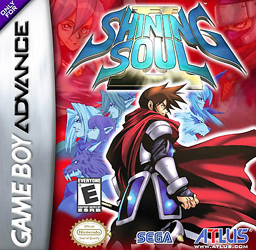
Shining Soul II is an action role-playing game for the Game Boy Advance. It was developed by Nextech and Grasshopper Manufacture, as the sequel to Shining Soul and part of the Shining series.

The Temple of Elemental Evil is a 2003 role-playing video game by Troika Games. It is a remake of the classic Dungeons & Dragons adventure The Temple of Elemental Evil using the 3.5 edition rules. This is the only computer role-playing game to take place in the Greyhawk campaign setting, and the first video game to implement the 3.5 edition rule set. The game was published by Atari, who then held the interactive rights of the Dungeons & Dragons franchise.

Azure Dreams is a role-playing video game developed by Konami Computer Entertainment Tokyo and published by Konami for the PlayStation. A Game Boy Color game with the same name was developed by Konami Computer Entertainment Nagoya and released two years later. A spiritual sequel, Tao's Adventure: Curse of the Demon Seal, was released on the Nintendo DS in 2005.

Shinsetsu Samurai Spirits Bushidō Retsuden is a role-playing video game for SNK's Neo Geo CD system, which retells the events of Samurai Shodown and Samurai Shodown II in greater detail. It was ported to the Sega Saturn and PlayStation.

Thousand Arms is a cross-genre video game developed by TOSE and published by Atlus for the PlayStation in 1998. The game mixes elements of Japanese role-playing video games and dating sim video games.

Tales of Mobile is the collective name of several mobile phone-based games available only to Japanese NTT DoCoMo FOMA 900i cellphone users that often feature characters and story elements from the popular Tales role-playing video game series. As these games are offered as a download-only phone service in Japan, none of them has been made available outside Japan.
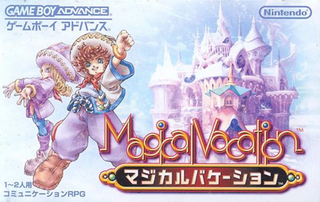
Magical Vacation is a 2001 role-playing video game developed by Brownie Brown and published by Nintendo for the Game Boy Advance only in Japan on December 7, 2001, and was later re-released in the same region in 2006. Japanese singer, model, and actress Mika Nakashima was featured in the television commercials for Magical Vacation. The game received a full English language fan translation in 2016.
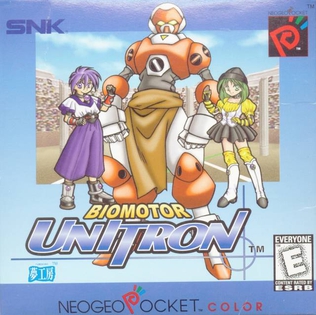
Biomotor Unitron is a role-playing video game (RPG) developed by Yumekobo for the Neo Geo Pocket Color. Released in Japan and North America in 1999 by publisher SNK, Biomotor Unitron was the first RPG for the SNK handheld console. A Nintendo Switch version was released on May 26, 2022.

The Wizard of Oz: Beyond the Yellow Brick Road, known in Japan as Riz-Zoawd, is a role-playing video game developed by Japanese developer Media.Vision for the Nintendo DS. The game is an adaptation of L. Frank Baum's 1900 novel The Wonderful Wizard of Oz, using its characters, locations and plot. The game was originally published in Japan by D3 Publisher on December 25, 2008. Xseed Games published the game in North America on September 29, 2009.
Dragon Quest is a series of role-playing video games that originated in 1986 with the release of the first game in the series. Although the games are not related in terms of story, many aspects of the gameplay are consistent throughout the series. Each game in the series add new elements to the gameplay, such as longer quests, character classes, or different ways of story-telling.
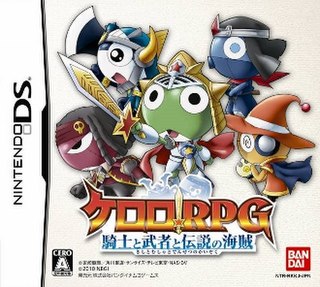
Keroro RPG: Kishi to Musha to Densetsu no Kaizoku is an action role-playing game developed by Namco Tales Studio and published by Namco Bandai Games for the Nintendo DS, which released in Japan in March 2010. The game is based on the Sgt. Frog franchise and was the final video game based on it. It features gameplay elements adapted from the Tales series.
The artificer is a playable character class in the Dungeons & Dragons (D&D) fantasy role-playing game. The Artificer first appeared as a full class in the 3.5 edition of D&D and was introduced in the Eberron campaign setting. The artificer is a unique base class that reflects many of the core themes of Eberron.

The Legend of Legacy is a turn-based role-playing video game for the Nintendo 3DS handheld video game console, developed by Cattle Call. The game was first published for Japan by FuRyu in January 2015, then localized by Atlus USA to be published by Atlus USA for North America in October and by NIS America for Europe and Australia in February 2016. The story takes place on the legendary lost continent of Avalon, where eight adventurers explore and fight to uncover its mysteries.
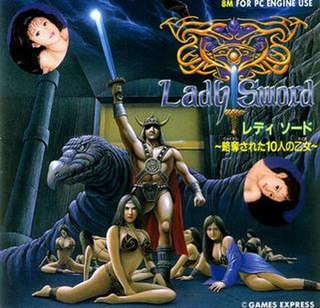
Lady Sword: Ryakudatsu Sareta 10 Nin no Otome, Lady Sword: The 10 Captive Maidens, is a 1989 role-playing video game that was released by Games Express for the PC Engine in Japan the year of 1992 for the PC Engine. The game was never released outside of Japan. However, an unofficial English translation has been made.

Lucienne's Quest is a role-playing video game developed by Microcabin for the 3DO, and is the sole traditional Japanese role-playing game released for the system. The story follows Lucienne, a teenage girl who sets off on an adventure to find a cure for a man's lycanthropy. Between adventuring from town to town and exploring the world, the player must battle with enemies using a turn-based battle system on an isometric grid.
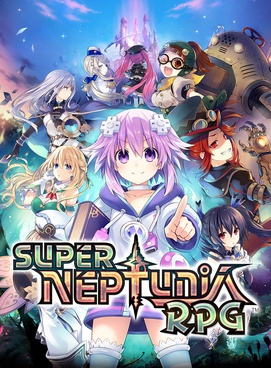
Super Neptunia RPG is a side-scrolling role-playing video game in the Hyperdimension Neptunia series developed by Artisan Studios, with assistance from Idea Factory and Compile Heart. It was published by Idea Factory for the PlayStation 4, Nintendo Switch, and Microsoft Windows via Steam. In the game, Neptune, Noire, Blanc, and Vert, all suffering from amnesia, oppose Bombyx Mori, a group that forces citizens to create 2D video games while forbidding other games.



















